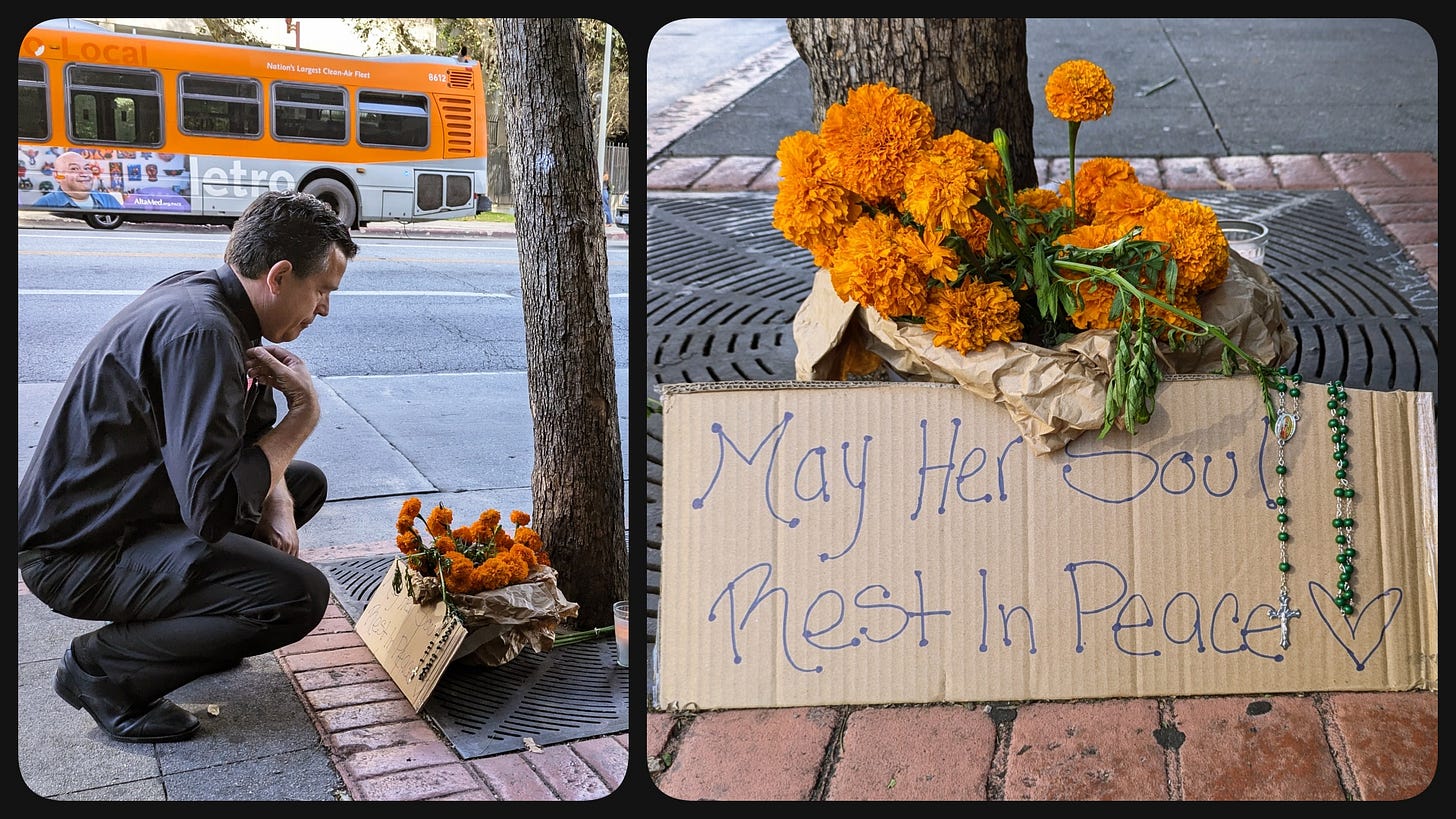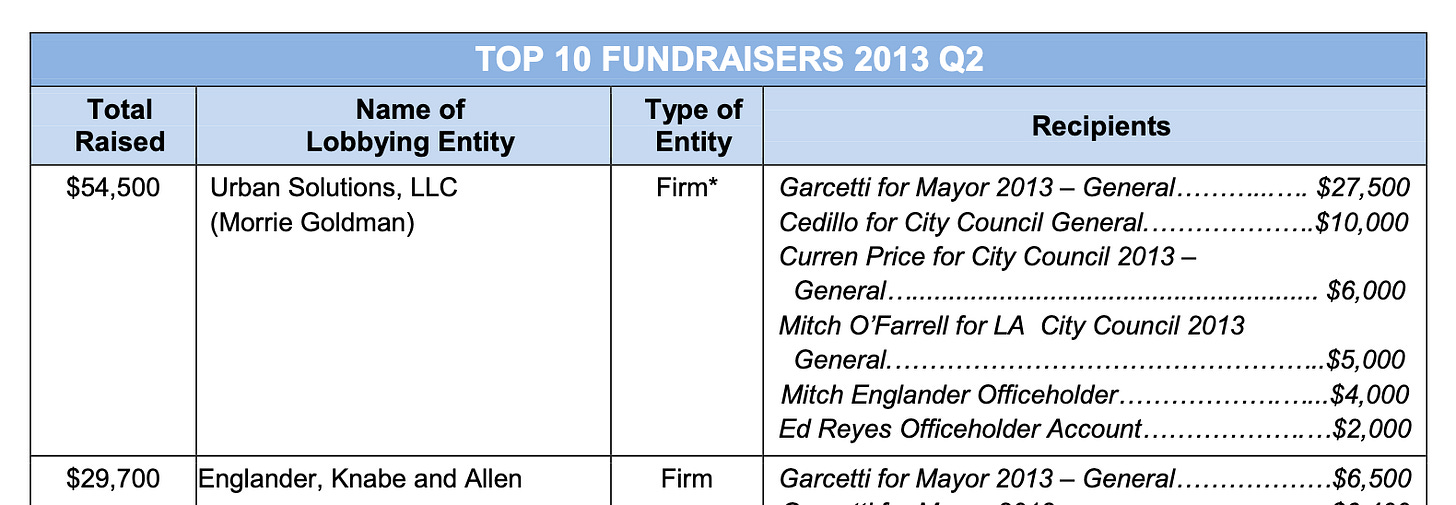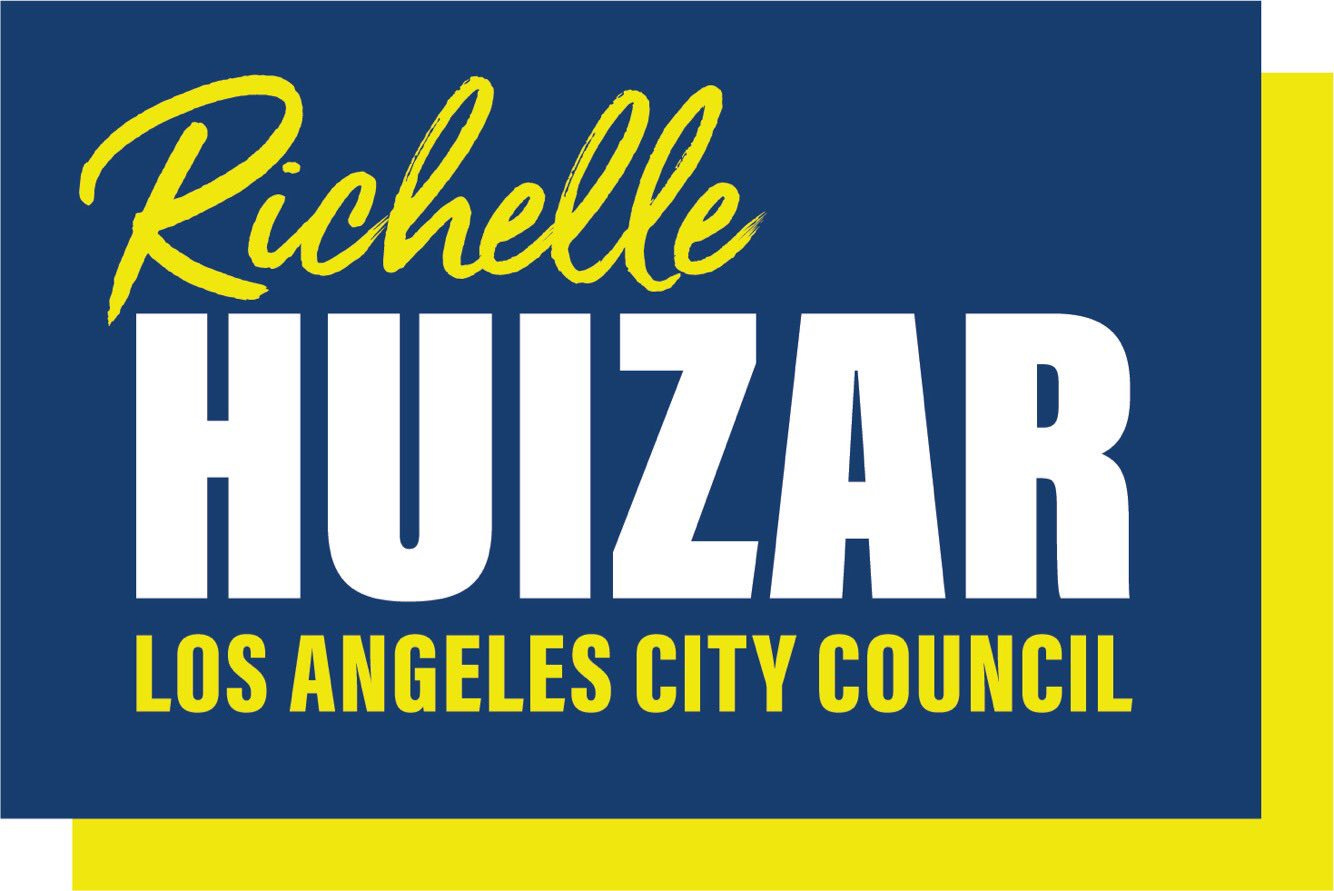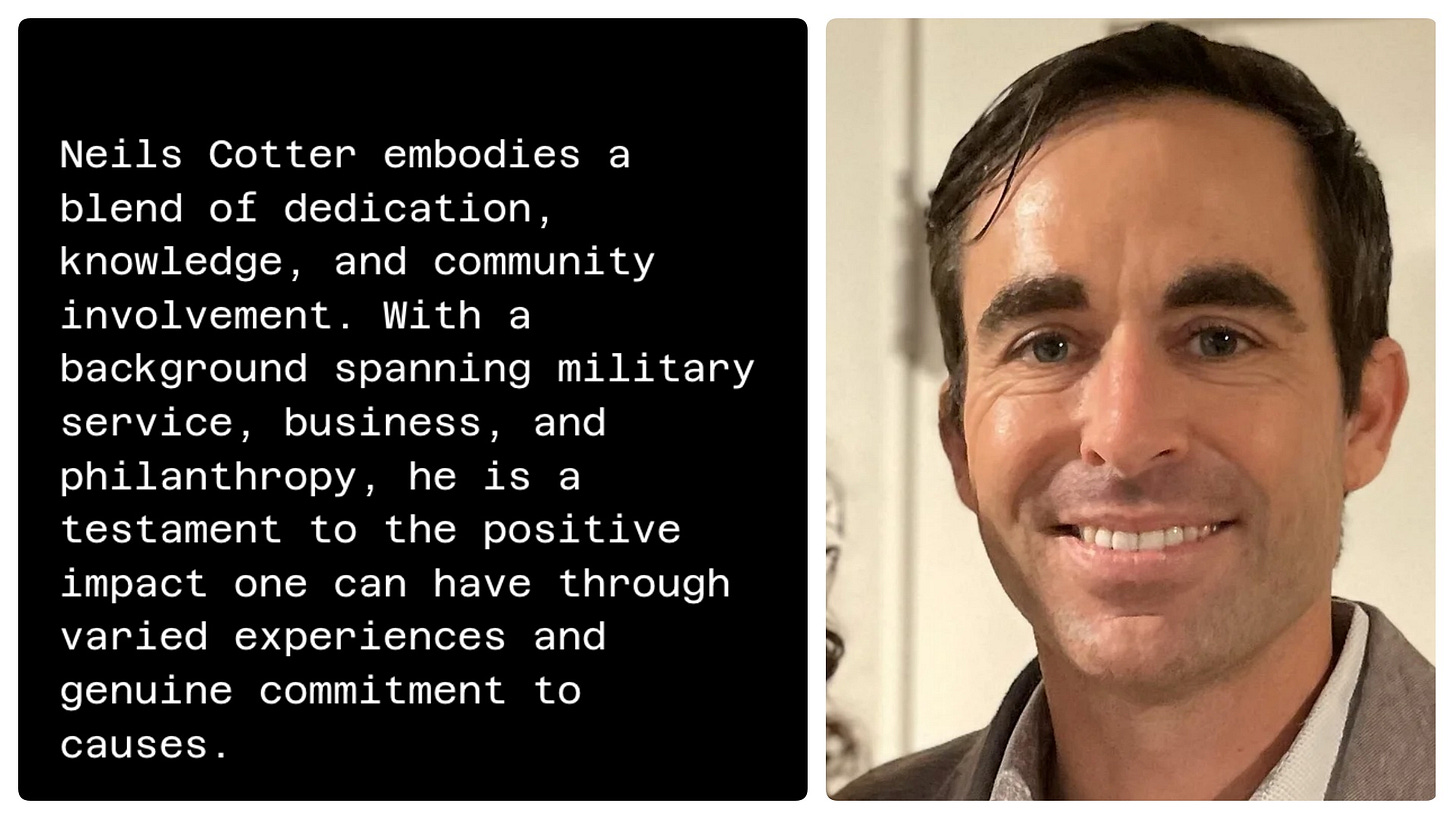Gentle reader,
This morning, we were in Federal court to witness the sentencing of lobbyist Morrie Goldman, the most important of the cooperating witnesses in Jose Huizar’s sprawling public corruption case, which last month saw the councilmember begin his long delayed 13 year prison sentence.
It got pretty weird.
As we’ve tracked Huizar’s career and his downfall, initially as frustrated constituents asking that Pershing Square be restored, later as investigative reporters and civic advocates, we’ve kept a close eye on the men behind the curtain like Morrie Goldman. We believe that Goldman is as responsible as anyone in the conspiracy the government dubbed Operation Casino Loyale for the crimes perpetrated against Los Angeles and Angelenos, and for the sad state of our beautiful, troubled city today.
Doing crimes is easy. Selling dope, stealing stuff, exploiting weaker people, none of this is rocket science. You just need to be a moderately well-organized sociopath to be a successful racketeer.
A moderately well-organized sociopath can also serve as an elected official, but they won’t get much done in City Hall without assistance.
In Los Angeles, zoning is merely a suggestion.
Any councilmember can wave their magic wand and turn a corner car wash into a glittering tower. But it would never happen without lobbyists like Morrie Goldman, who bring real estate developer clients into harbor and coordinate the complex dance of ensuring both the “honorable” representative and the needy land owner are satisfied, that the dirty deals cut in back rooms sound good when pro-development bloggers post about them, and that all public hearing deadlines are met.
Competent efficiency is the handmaiden of corruption.

Morrie Goldman was very good at his job. He learned how the City Hall sausage was seasoned while serving as Chief of Staff to councilmembers Hal Bernson (notable for his ethics violations) and Mike Hernandez (arrested on drug charges while in office) before going out on his own in 2004 with the boutique lobby shop Urban Solutions.
As a fundraiser, Goldman made himself indispensable to the City Family, which meant that council office doors swung open when he came back after election season because his developer clients wanted something in return.
On November 8, 2018, as images appeared online showing Jose Huizar’s City Hall office and home getting raided by the Feds, a lot of people watched in stunned fascination. For frustrated constituents like us, it felt cathartic and overdue. For people closer to Huizar’s orbit, especially those who had been having badly, we imagine it was scary. Would there be more raids, or was this it?
Also on November 8, 2018, Morrie Goldman got a call from Agent Andy Civetti of the Federal Bureau of Investigation, and was given the opportunity to cooperate to avoid prosecution. He started talking. On August 25, 2020, Goldman agreed to plead guilty for his role in helping his client Carmel Partners navigate a labor appeal for their Mateo Street Arts District project (Alloy) through an extraordinary series of machinations.
Morrie Goldman helped form a Political Action Committee that was illegally controlled by Jose Huizar, and which collected funds to elect the termed out Huizar’s wife Richelle Rios, a person with no political experience, to his CD14 council seat. It was pretty blatant. Carmel Partners, among other developers, paid handsomely into Richelle’s PAC, and in return Huizar sold his vote and rejected the labor appeal.
While he was at it, Huizar ensured the 35 story tower—the tallest in the Arts District by hundreds of feet—wasn’t besmirched by any icky low income units for artists. Alloy, which in addition to being prominently visible from the top of Angels Flight Railway, also blocks views of Downtown from the Sixth Street Bridge, is a thumb in the city’s eye.
And so this morning we went to the courthouse to hear Morrie Goldman sentenced.
In contrast to Ray Chan’s packed sentencing hearing, there weren’t a lot of supporters present, just a tight knit family group in the right front row to hear how Judge John Walter would rule. Would he listen to the government, which was recommending a light sentence in recognition of how much Goldman had helped them make their case, or would he look to the probation office and impose a prison term?
The judge started rattling off numbers, Goldman’s offense level was adjusted up because an elected official was involved, adjusted down by his lack of criminal record, guilty plea and assistance to the government.
Then we heard about extensive redactions to the record of how exactly he had helped the government, which made us wonder about Cumulus, Carmel Partners’ other huge project in former council president Herb Wesson’s district, and many other questionable developments around town.
The probation officer recommended a sentence of 18 months in prison and a $60,000 fine. The government wanted 6 months home detention, 3 years’ probation and the same fine. Morrie Goldman was requesting a non-custodial sentence. The judge was ready to thread the needle. Come on up and be heard.
Morrie Goldman, rumbled blue stripe suit and hair in a topknot, went to the lectern, flanked by his attorney Steve Meister, in oxblood cowboy boots. Meister said that Goldman and his son would like to speak. The judge cut him off, he’d hear no family members.
Meister said it was a rarity in his career, but he agreed with the government, 6 months home detention would be appropriate for his client.
Judge Walter countered, “I have a hard time with a probationary sentence. Your client was very sophisticated. He knew where the line was—” and here he referenced a curt text message in which Goldman instructed Huizar to stop explicitly narrating their conspiracy. He was “the most sophisticated of the defendants, in this business for a long time and made a lot of money. He stepped over the line, but why has never been answered for me.”
Think fast, Morrie—got any answers? You’d better! He conferred with his attorney. Then pulled out a pre-written statement and began to read from it. Would this satisfy the judge and his hunger to know why?
It’s boilerplate contrition, expressing regret for causing harm, describing how after agreeing to cooperate with the FBI, he gave up his career and moved to the Central Coast and began training as a wine professional—it’s not glamorous, he polishes glasses!—volunteering in his new community, attending regular therapy sessions with Dr. Beverly Ford for his corruption related depression and developing tools to confront his past honestly.
He’s learned to ask himself: is this what a good person would do? He shares his experiences with college students and warns them of the perils of the political life. The guilt and shame are ever present. He feels nervous to stand before the judge. But he is resolute and whatever happens, he will continue his path of service and any punishment he will accept gracefully.
Judge Walter, who has a stone face that would give Buster Keaton pause, briefly reanimates to bark that he still hasn’t explained why he did it.
“You’re honor, I wish I could give you a good answer. I was between a corrupt councilman and a manipulative client. I was checking off boxes. I don’t like conflict. I wanted to make them happy.”
Judge Walter observed that usually white collar criminals were motivated by greed, but he saw no benefits other than Goldman’s high fees.
Goldman griped, “I had a client, Neils Cotter from Carmel Partners, who said Huizar was going to blow up the project. I’m embarrassed and ashamed. I don’t like coming to L.A.—it reminds me of the guilt. Life in City Hall, you’re in a bubble, in your own world, you make decisions and just keep trying to move the project forward.”
We thought about how pleasant it is, up on the Central Coast. And how unfair it seems that somebody who admittedly aided the corruption that has made Los Angeles an international poster child for mismanagement and squalor is not here in the trenches trying to clean up his mess every day.
How selfish, to decamp to paradise and work on himself, when this beautiful city is lying half dead in the gutter.
Judge Walter, too, looked skeptical. Steve Meister stepped forward, and said he wanted to share a theory, inspired by how his own mother had taught him to think. And then he swung for the fences, with a defense so outrageous it was all we could to gape.
Morrie Goldman had a lot in his life, but he was missing “something”—the approval of a strong male figure. Now, he wasn’t saying that Morrie looked to Jose Huizar for that, but Huizar was a charismatic, albeit corrupt, leader. He allowed himself to fall into Huizar’s orbit. He was unconsciously pursuing relief by helping Huizar. But when he got subpoenaed, that gave him the insight he needed to work on himself and choose a path of awareness. He was a good man who made a mistake, who has and will continue to pay for it.
That’s right: Daddy issues. According to his lawyer, that’s why a 50-something lobbyist committed multiple felonies to aid the development of lousy projects and elevate the electoral options of the councilman's wife. He just needed a dad.
Unbelievable.
Now the judge prepared to deliver his verdict. He recounted the multiple meetings through which Morrie Goldman coordinated the criminal vote buying scheme, showing Neils Cotter that he could be counted on to navigate the City Hall rapids. It was all very serious and he was inclined to impose a prison sentence.
But he didn’t impose one. Instead, the judge said he was impressed by what he had heard and read in the family support letters—despite objecting earlier that Goldman had not explained why—and he imposed the non-custodial sentence that the government and Goldman had requested.
It was disorienting and surreal. The judge dismissed everyone, and the lawyers, several reporters, Goldman and his family walked out into the courtyard. We both felt numb, and debated if we should approach Goldman and say anything. Kim decided it was her duty, and lingered outside the men’s room to catch him before he left the courthouse.
“Mr. Goldman, you got a wonderful opportunity to help Los Angeles. I want to see you help Los Angeles.”
He briefly locked eyes with her and said, simply, “Thank you.”
We really hope he meant that. Because after twenty years in the bowels of the beast, he knows everything, and could make a profound difference—not just by calling out corrupt officials and staffers with whom he conspired, but by exposing the broken system which only rewards the Jose Huizars and Neils Cotters and Morrie Goldmans in this world, and makes it impossible for this city to operate ethically, fairly and honorably.
If Morrie Goldman had the courage to talk, the whole city would listen.
Okay, this is where things get weird, and why we’re extending a deep discount on Saturday’s 1910 Los Angeles Times Bombing Tour with Detective Mike Digby—$5, cheap. Because right after court, we came close to dying, and Morrie Goldman kind of saved us.
We spotted Goldman and his family leaving the courthouse, and lingered on the steps shooting the video you’ll find at the top of this post. This delayed us by several minutes, minutes that would soon prove significant.
We headed down Hill Street towards Grand Central Market. As we crossed Third Street, we noticed one of our market management friends standing on the sidewalk—waved—and realized he was standing over a corpse.

A person had seconds before launched themselves off the top of the parking structure, hit metal awnings coming down, and landed on the sidewalk, partway in the gutter. Their right arm was severed near the elbow, palm up and cupped, splayed on sidewalk some feet away from the body. It was horrible.
We flew into action, helping to manage the situation and to calm witnesses. Only later, when the adrenaline was gone, did we realize how close we’d come to being on that sidewalk when some poor soul’s tragedy came to an end.
And we thought, of course, of the most remarkable portion of Dashiell Hammett’s novel The Maltese Falcon, the Flitcraft Parable, about the real estate man who is so rattled when a falling beam doesn’t kill him that he throws his life and family away, only to remake them in the next town.
Hammett wrote, and we’ll never read it the same way again:
“He went like that, like a fist when you open your hand.”
From the market, we went down Main Street to the Hotel Cecil, where our friend Rev. Dylan Littlefield was holding the 2nd Annual Ofrenda Ceremony to remember the dead. We left a card there for the stranger who lost hope this morning, wishing things might have been different for them.
And as we finish this newsletter, the coroner’s portal has been updated with what is probably the name of the person who fell. RIP Francisco Guerrero (2002-2024). Forgive us for misgendering you. We hope you find peace.

So that was our day. And honestly, like Flitcraft, we’re rattled. If we didn’t have a tour planned for Saturday, we might take off for a few days and try to get lost in America.
But since we do have a special tour scheduled, here’s the deal: tickets for Detective Mike Digby’s forensic history investigation of the 1910 Bombing of the Los Angeles Times are now just $5. Mike is amazing, and this is a rare opportunity to learn about the national investigation he uses while training FBI agents. Catch a brief snippet of his webinar about the case above.
We hope you’ll join us on the tour, and bring a friend. Let’s have a lovely time in the heart of the city, exploring a crime that in one tragic instant forever sent Los Angeles on this rough course we’re now navigating. If you’ve got the funds, you can buy a copy of one of Mike’s books (Bombs, Bombers, Bombings of Los Angeles and Burn, Bomb, Destroy: the German Sabotage Campaign 1914-1917), and we’re happy to accept tips, but that’s not required. This is our gift to you.
Yours for Los Angeles,
Kim & Richard
Esotouric
Are you on social media? We’re on Instagram, Twitter, Facebook, YouTube, Mastodon, Threads, Bluesky, Substack Notes, TikTok and Reddit sharing preservation news as it happens.
Our work—leading tours and historic preservation and cultural landmark advocacy—is about building a bridge between Los Angeles' past and its future, and not allowing the corrupt, greedy, inept and misguided players who hold present power to destroy the city's soul and body. If you’d like to support our efforts to be the voice of places worth preserving, we have a tip jar and a subscriber edition of our main newsletter, vintage Los Angeles webinars available to stream, in-person tours and a souvenir shop you can browse in. We’ve also got recommended reading bookshelves on Amazon and the Bookshop indie bookstore site. And did you know we offer private versions of our walking tours for groups big or small? Or just share this link with other people who care.
UPCOMING BUS & WALKING TOURS
• The 1910 Bombing of the Los Angeles Times Walking Tour with Detective Mike Digby (Sat. 11/9) • Hotel Horrors & Main Street Vice Downtown L.A. (Sat. 11/16) • Charles Bukowski’s Westlake (Sat. 11/23) • Angelino Heights & Carroll Avenue (Sat. 12/7) • Raymond Chandler’s Noir Downtown Los Angeles (Sat. 12/14) • Miracle Mile Marvels & Madness (Sun. 12/22) • Human Sacrifice: The Black Dahlia, Elisa Lam, Heidi Planck & Skid Row Slasher (Thurs. 12/26)



















Share this post